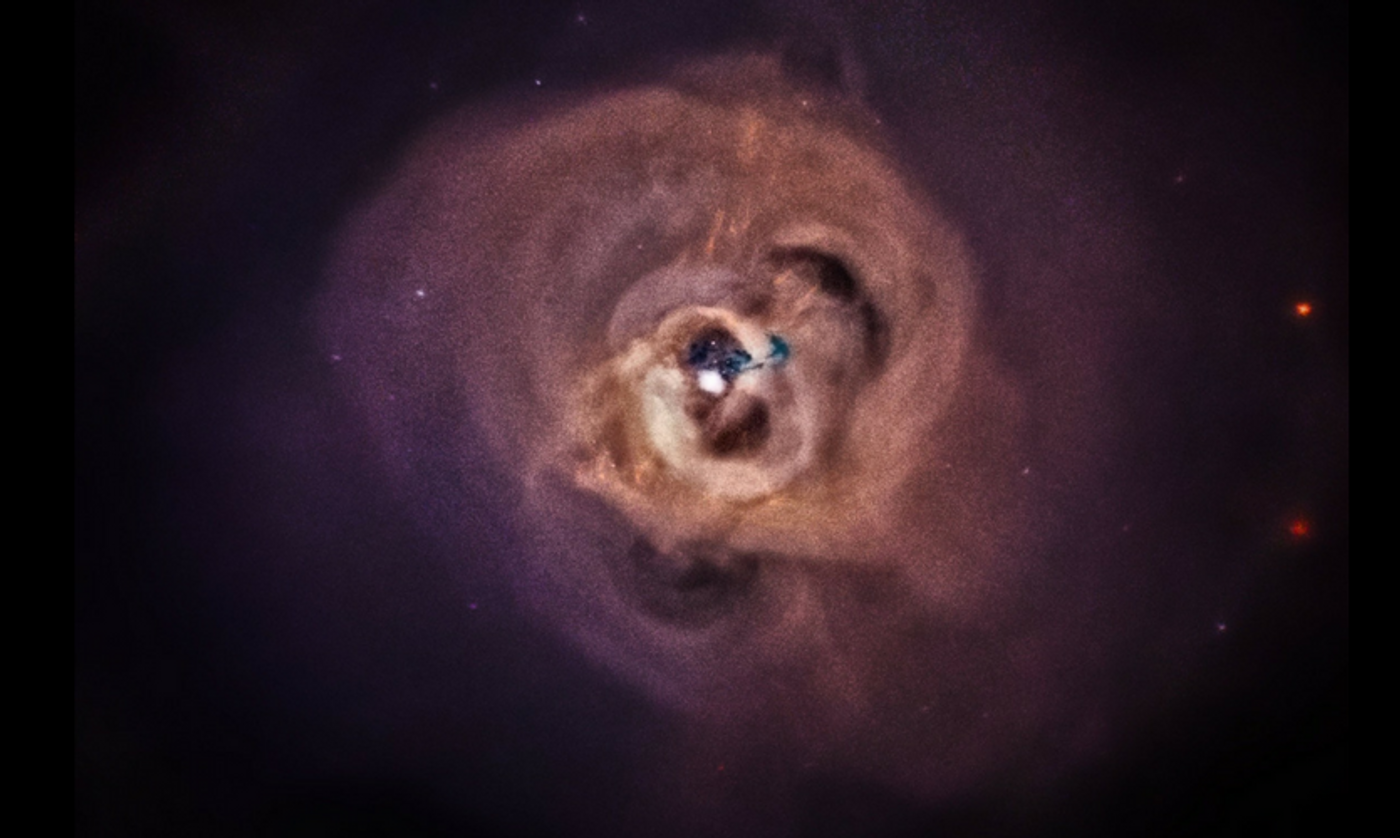Astrophysical X-rays Source Inspires New Theory Of Dark Matter
In a recent paper, astrophysicists at Johannes Gutenberg University Mainz (JGU) have come up with a new hypothesis to explain what dark matter is made of, based on the observations of unidentified x-ray signals of a particular energy spectrum.
Unlike ordinary matter, dark matters do not comply with the Standard Model of physics or emit visible light. Compared to normal matter, which consitutes 5% of the universe, dark matter represents 23% of total mass-energy, despite the fact that it has not been directly observed by any means.
First postulated in the 1930s, the concept of dark matter was employed by Swiss astrophysicist Fritz Zwicky to explain his puzzling observation of Coma Galaxy Cluster: the gravitational force within the cluster shouldn’t be strong enough to keep the galaxies together, based on the mass of visible matters. He was convinced that there must be invisible matters in the seemingly void space, which holds the cluster in the observed structure.
Many physicists have been trying figure out the nature of dark matter, and one idea has gained the most acceptance: dark matter is mostly made of weakly interacting massive particles, or WIMPs. A WIMP has no clear definition and its estimated mass have a wide range between 6 and 30 GeV (giga-electron volt) . It exists in concept as a new elementary particle which interacts via gravity and likely exists outside the standard model.
The idea of WIMPs helped to resolve many astrophysical and cosmological problems related to dark matter. However, recent null results from direct detection and the lack evidence of supersymmetry had some lose faith in the hypothesis. And some physicists have even turned to alternative theories that eliminate the idea of dark matters all together.
Researchers at JGU have now presented a new theory: dark matter is made of extremely light particles. How light? Almost one hundred times lighter than electrons (an electron has a mass of 0.51 MeV or mega-electron volt), a million times smaller in mass than the WIMPs theory proposed.
So what is the base of this new hypothesis? In 2014, several groups reported hints for an unidentified line in astrophysical x-ray signals from galaxies and galaxy clusters with the energy at 3.5 keV. While some dismissed it as a reflection of imperfectly modeled atomic transitions, others thought that the unusual X-ray signal could well be the decay radiation emitted by dark matters.
With a wavelength ranging from one picometer to a few nanometers, X-rays expand the astronomers’ horizons by tapping into the spectrum that is inaccessible by an optical telescope. Because X-radiation is absorbed by the Earth's atmosphere, so X-rays observatories are placed into high altitude by balloons, sounding rockets, and satellites.
Particle physicist Joachim Kopp at the Mainz-based Cluster of Excellence on Precision Physics, Fundamental Interactions and Structure of Matter (PRISMA) proposed an idea that takes a step further. He postulated that the dark matter particles are essentially fermions and a mass of only a few kilo-electron volts and the 3.5 keV X-ray signal comes from the annihilation of two dark matter particles. The model is analogous to the same phenomenon of an electron's collision with its antiparticle a positron, after which both particles vanished giving birth to a pair of high energy photons.
"It has long been assumed that it would not be possible to observe such annihilation of dark matter if it were made of particles that light," explained Kopp. "We have subjected our new model to scrutiny and have compared it with experimental data, and it all fits together much better than in the case of older models." What’s more intriguing, calculations done by Kopp’s team matched the hypothetical x-ray signature with the actual X-ray observations.
Even though the idea of lightweight dark matter makes it hard to explain the formation of galaxies, Kopp was confident about their model. "So far, we have been able to deal with these concerns," said Kopp. "Our model provides an elegant way out."
Researchers detect possible signal from dark matter. Credit: EPFL
Source: Universitaet-Mainz










